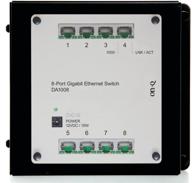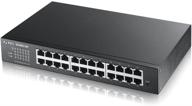
Review on 💼 Cisco Business CBS250-8FP-E-2G: Advanced Smart Switch with 8 Port GE and Full PoE, Enhanced by Limited Lifetime Protection by Christopher Karamba

SOHO Managed Switch with PoE is great for small business/intermediate home users
supports PoE+ (up to 30W per port or 60W total across all ports) and 2 ports have no PoE but are combo SFP- ports . This supports almost every feature you need for a small business or home lab - VLANs, port tagging, and access control lists. It supports even more features, but probably more than you need for the size of this switch. Cisco describes this as a layer 2 switch. My main reasons for having a managed switch on my network are port aggregation (LACP) so my servers can bond two network interfaces together and VLANs to separate traffic on my network. This switch replaces an old but still working (and cheap) HP ProCurve 2824 on my network - yes I reduced the number of ports from 24 to 10 but I didn't use all ports. For my purposes, this Cisco CBS250 does everything HP can do in a smaller, quieter form factor and with a much nicer modern web interface. The main interface is the web interface available by default (telnet and SSH are disabled by default). If it is connected to a network with DHCP, it will get an IP address on first startup, otherwise the default IP address is 192.168.1.254. You can configure the switch to use either DHCP or a fixed IP address. Once inside, the user interface is relatively attractive and fairly comprehensive; I was able to set up the port and VLAN aggregation quite easily in the web interface. It's running some kind of Cisco OS underneath, so you have some fancy/entrepreneurial ways of doing things like having to save config changes if you want them to persist across reboots (this is by design, so if you find a bug in the configuration, a restart of the switch is sufficient for recovery). It also has two firmware slots which I noticed after the upgrade (my switch came with firmware two versions lower than the current one) - it saves the previous firmware version which you can revert to if needed, by simply restarting the computer. This gives a lot of room for customization, the default settings are pretty reasonable - you can plug it in and just use it like a regular switch. This comes with very sparse documentation - I'm not entirely sure what the point of this is as it's basically just telling you how to connect the switch and default credentials. Everything else is online, and while the manuals are quite extensive, there are "Technical Notes" to help you complete specific tasks such as: B. when updating the firmware. This switch as part of the "Cisco Business" series is supported via the Cisco Business Dashboard. This product must be installed on a server that will allow you to manage all your Cisco Business devices from one location. Although I haven't tried it myself, Cisco says the dashboard is free for up to 25 devices, which should be enough for a small business. However, I think for most small deployments it probably makes more sense to set up devices one at a time rather than using the dashboard. It's a very well constructed all-metal body with vents on the sides and top. It comes with grommets for rack mounting, a couple of screws for wall mounting, and rubber feet for shelf mounting. It uses an external power supply block instead of the one built into the switch. While this is probably done to reduce the size of the switch, it's a little annoying. This switch is fanless which is great for home environment or places where the switch will be heard. The switch gets a little warm, but that doesn't bother me. Overall, this is a good switch, suitable for small businesses or advanced home users. It offers a lot of features, but at a slightly higher price point than the competition.
- Annual trial
- poorly designed
New products
Comments (0)
Top products in 🎚️ Switches
Another interesting products
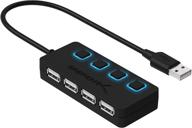
HB-UMLS Sabrent USB 2.0 Hub with 4 Ports and LED Power Switches for Each Port

12 Review
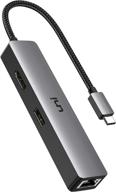
🔌 uni USB C Hub with Ethernet Adapter, 4K HDMI, Gigabit Ethernet, and 3 USB 3.0 Ports for MacBook Pro, iPad Pro, XPS

11 Review
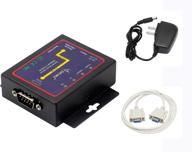
🔌 CERRXIAN RS232 to Ethernet Serial Device Server - TCP/IP Converter with 1Port DB9 RS232 Serial to Ethernet Connectivity

3 Review
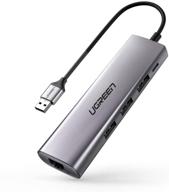
UGREEN USB 3.0 Ethernet Adapter Hub with RJ45: Fast Gigabit Ethernet Converter, 3 Ports USB 3.0 Hub Compatible for MacBook, iMac, Surface Pro, Chromebook, Laptop, PC

11 Review




